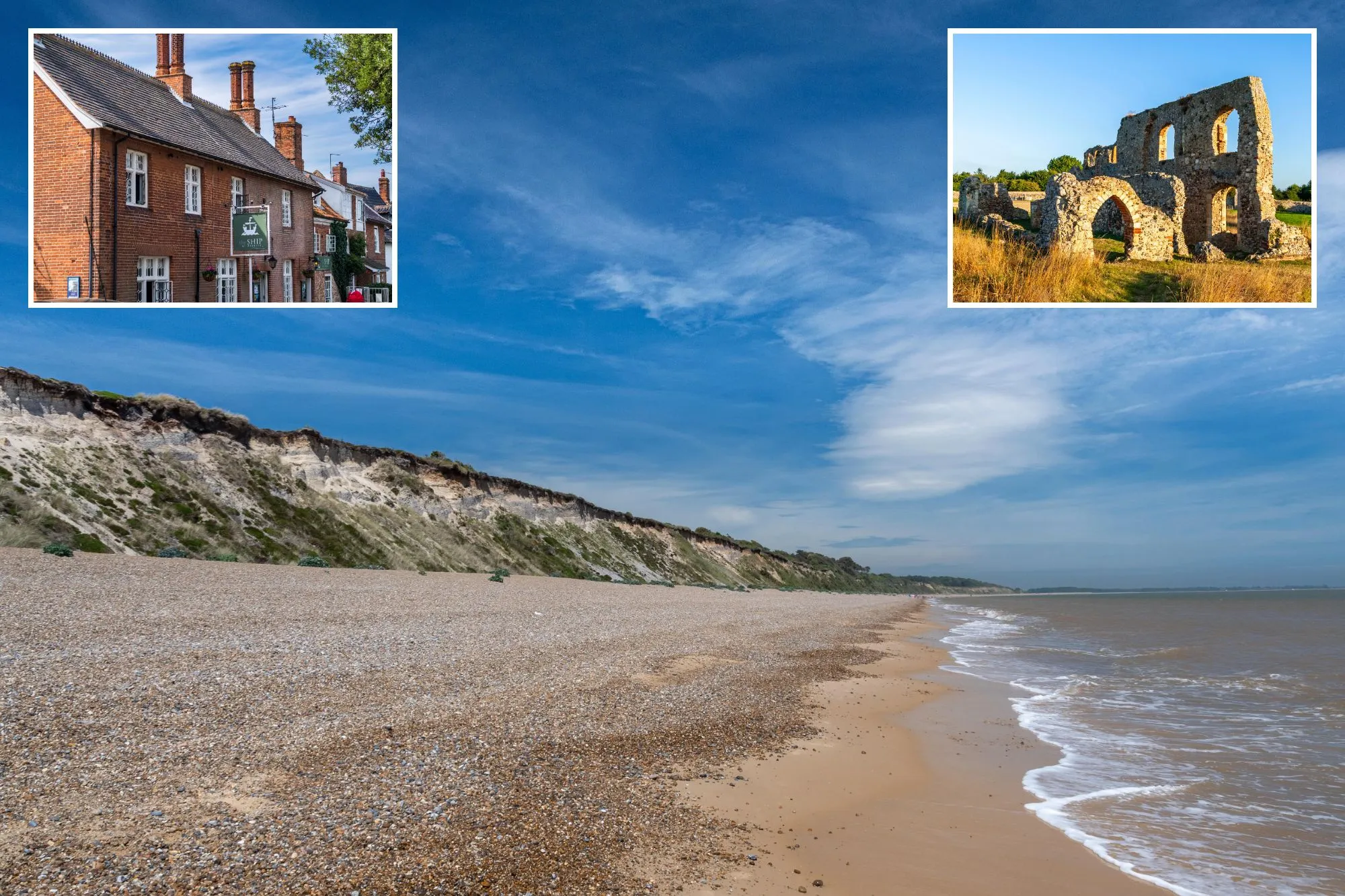Tiny village called the ‘Lost City of England’ that once rivalled London

WOULD you believe it that one village in Suffolk used to be as big as London, and just as important?
On the east coast of England is a village that years ago used to be one of the country’s biggest trade hubs, but due to coastal erosion has been lost to the sea.
Dunwich in Suffolk sits 13 miles down the coast from Lowestoft, and in recent history has been called the ‘Lost City of England‘ or even Suffolk’s answer to Atlantis.
During the medieval period, Dunwich had a main port which was a huge hub for international trade in what was the Kingdom of East Anglia.
Dunwich was even the capital of the Kingdom of the East Angles in the Anglo-Saxon period.
At that time, Dunwich was home to around 3,000 people – the same number that were in London.
It would trade goods like wool, grain and fish, but problems began in the 14th century after a number of huge storms.
Significant storms in 1286, 1328 and 1362 caused a huge amount of damage, destroying buildings.
It washed the port and a large amount of the town into the sea, including around 400 houses and eight churches.
Sonar images have even revealed a number of old buildings and streets sitting 30 feet below the sea.
After this, the medieval port was lost and so Dunwich became what it’s known as now, a coastal village.
There’s very little of the original Dunwich left now, but one ruin that’s still on land is the Greyfriars Monastery.
This isn’t the original though as that was also destroyed by a storm in 1286, the ruins visible today are from the “new” friary that was rebuilt in the late 13th century.
These are reportedly haunted with some visitors saying they spotted mysterious lights, and even ghosts at the friary.
If you want to learn more about Dunwich’s rich history, there’s even a museum dedicated to telling the history of the village from Roman times to the present day.
But today, most people visit Dunwich to spend time on its stretching beach which in 2021 was named as one of the UK’s best-kept secrets.
Just down the coast is Dunwich Heath, known for its wildlife like Dartford warblers, woodlarks, adders and antlions.
The beach and surrounding countryside are owned by the National Trust, which runs a beachside tearoom called Coastguard Cottages where you can pick up hot and cold drinks, snacks and light meals.
There’s also a children’s play area on the beach, and cafes and pubs in the nearby village.
Favourites on Tripadvisor include The Ship Inn Restaurant, Flora Tea Rooms and The 12 Lost Churches.
For more exploration, further up the coast is the pretty seaside town of Southwold, or travel south to Leiston and Aldeburgh.
The English seaside town with no arcades or rides but named the best in the UK…

Aldeburgh in Suffolk doesn’t have any arcades, but instead is littered with pastel-coloured holiday villas and fisherman’s huts selling the daily catch.
Today, the town still celebrates its rich history and has a literary festival each year.
Locals also boast about the town’s fish and chips, with The Suffolk recommended by Michelin.
Along the high street, instead of arcades you will find clothes boutiques, antiques shops and independent book stores.
One stop to head to is O&C Butcher – a 130-year-old clothes store selling top brands including Barbour and Gant. The town is also known for being the home of famous composer, Benjamin Britten.
Today, during the summer months, visitors can head to his home, The Red House. Britten shared the home with Peter Pears and it is nestled in a five acre garden, with a farmhouse, gallery space, shop and cafe. And there is a historic cinema in the town too.
It doesn’t look like your average cinema from the outside, as it features timber framing.
The beach itself boasts both shingle and sand and backs onto the town, making it the ideal spot for adventuring to after exploring the town.
On the beach you will also find The Scallop – a sculpture that is a tribute to Benjamin Britten.
The Times recently named the seaside town the best in the UK.
For a place to stay in Dunwich, discover what one writer made of the Smugglers Inn.
And hear more from Jimmy Doherty who lives in Suffolk or as he called it, the ‘undiscovered gem of England’.




